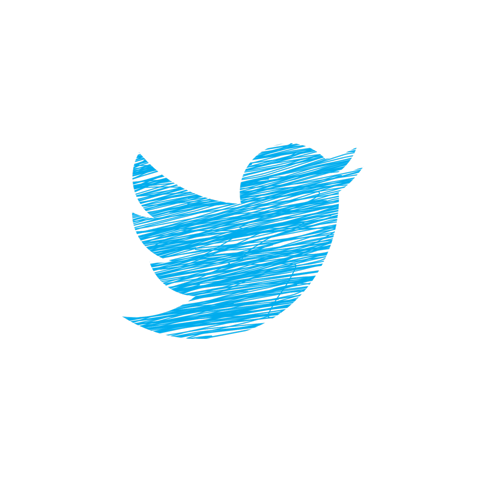Using Twitter to Grow Your Business, as originally published in Forbes.
Are you considering using Twitter to grow your business? With 53% of people who use Twitter being “more likely to be the first to buy new products,” it’s a platform that’s prime for brick-and-mortar and e-commerce retailers. However, much like any solid marketing campaign, using Twitter effectively takes a little bit of planning.
Understand Your Audience
Maximizing your efforts by using platforms where your target audience spends time is a social media best practice. Start by understanding your current or intended customers. Just as Pinterest, Instagram and TikTok are more popular with certain users than others, so is Twitter. Before starting your Twitter efforts, cross-reference Twitter’s user base with your target audience. The median age of adult U.S. Twitter users is 40. Most adult U.S. Twitter users are between the ages of 30 and 49, followed by the second-largest group of users between the ages of 18 and 29. The most active Twitter users are likely to be women. If this sounds like your target audience, read on.
Optimize Your Profile
Optimizing your Twitter profile starts with adding a link to your company’s website, crafting a complete bio and uploading a clear brand logo as your profile image. At my company, these are the first steps we take before launching any Twitter efforts. Be sure to showcase your products or brand with an eye-catching header image at the top of your profile page as well.
Include your location in your profile — this is especially important for small businesses. And most importantly, choose your Twitter handle wisely. If possible, align your handle and with what your brand uses on other platforms like Facebook and Instagram. Branding consistency throughout your social media platforms is important so that consumers can easily find you on their favorite social media site. Once you’ve optimized your profile, it is time to get tweeting.
Schedule And Test Your Tweets
Scheduling your tweets saves you time and makes it easier to test when tweets best reach your audience. There are many paid tools available to schedule tweets, but if budget is a concern, Twitter offers two free platforms: TweetDeck and Twitter Ads. TweetDeck allows you to not only schedule tweets but also manage messages and see your notifications and trending topics. With Twitter Ads, you can schedule tweets, but it also doubles as a way to use those tweets for advertising, if you choose to do so (it’s not required). While both are free, Twitter Ads requires you to add a credit card to use in the event that you decided to promote a tweet, something that we’ll review later in the article.
But why test your tweets? You cannot use Twitter to grow your business if you’re tweeting and your intended customers aren’t on the platform to see them. You need to understand when your audience is using Twitter the most so that you can schedule your tweets in that time frame. Maybe they are on Twitter more in the afternoon than in the morning. It is possible that they are busy working and handling family concerns during the week, so weekend tweets reach them more frequently. Schedule a series of tweets at various times and track the analytics to determine which tweets work best. Speaking of analytics …
Use Twitter Analytics
Tracking what works and does not work is the best way to refine your efforts as you use Twitter to help grow your business. First, define what a successful Twitter campaign looks like for your business: Brand awareness, the number of people reached, clicks to your website, leads, phone calls, white paper downloads or email sign-ups are all great key performance indicators to track. You ideally want to track what will bring in revenue for your business, but do not shy away from tracking both actionable metrics (conversions) and vanity metrics (reach).
If you’re not meeting the goals you set, consider reviewing and changing the timing of your tweets, your messaging, your hashtags or even your call to action (what you’re asking the consumer to do). Then, try again and review your Twitter analytics to see what worked and what didn’t.
Sometimes tweets need a little extra support to get them in front of new audiences. And that is where we use promoted tweets.
Advertise
Twitter allows advertisers to target their tweets based on interest, gender, location, keywords, device, language and even how similar users are to your own followers. There is also an option to remarket your advertising to those who have already shown interest. While at this stage you know that your audience is on Twitter; narrowing it down to a specific target demographic can be more cost-effective and alleviate any unnecessary spending on ads that reach consumers who aren’t likely to be interested in your product.
Interest and keyword targeting based on your product and product vertical can create a more effective ad. For example, if you sell organic dog treats, targeting people who talk about their dogs or have shown interest in dog and pet products can provide the opportunity for your tweet to be shown to this key audience. Layering in location-based targeting is also important, especially if you only serve a specific region. But just like with your non-promoted tweets, test the messaging, the call to action and the offer with different tweets, and then analyze the results.
A well-strategized and thought-out Twitter effort can help drive new business, regardless of whether you’re a brick-and-mortar or an e-commerce retailer. But just as you would for any other digital platform or even with traditional media, plan and test your content and adjust as needed.




